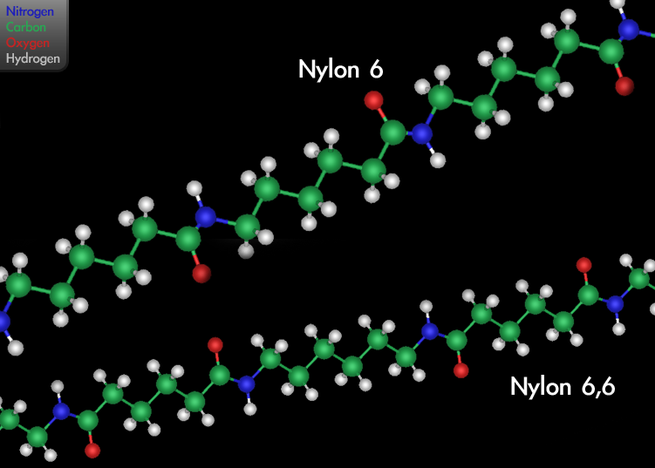Nylonnoun
Originally, the DuPont company trade name for polyamide, a copolymer whose molecules consist of alternating diamine and dicarboxylic acid monomers bonded together; now generically used for this type of polymer.
Nylonnoun
(plurale tantum) A stocking originally fabricated from nylon; also used generically for any long, sheer stocking worn on a woman's legs.
Nylonnoun
Any of several thermoplastic polyamide plastics, comprising a family of high-strength resilient synthetic materials, used mostly in fibers.
Nylonnoun
A synthetic fabric consisting of fibers of nylon[wn1].
Nylonnoun
Stockings made of a thin form of nylon{2}, especially full-length stockings either sheer of of varying shades.
Nylonnoun
a thermoplastic polyamide; a family of high-strength resilient synthetic materials
Nylonnoun
a synthetic fabric
Nylon
Nylon is a generic designation for a family of synthetic polymers composed of polyamides (repeating units linked by amide links). Nylon is a silk-like thermoplastic, generally made from petroleum, that can be melt-processed into fibers, films, or shapes.
Satinnoun
A cloth woven from silk, nylon or polyester with a glossy surface and a dull back. (The same weaving technique applied to cotton produces cloth termed sateen).
Satinadjective
Semi-glossy. Particularly describing a type of paint.
Satinnoun
A silk cloth, of a thick, close texture, and overshot woof, which has a glossy surface.
Satinnoun
a smooth fabric of silk or rayon; has a glossy face and a dull back
Satin
A satin weave is a type of fabric weave that produces a characteristically glossy, smooth or lustrous material, typically with a glossy top surface and a dull back. It is one of three fundamental types of textile weaves alongside plain weave and twill weave.








